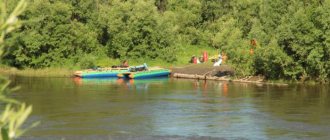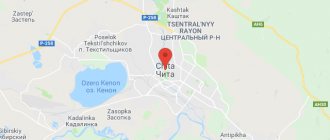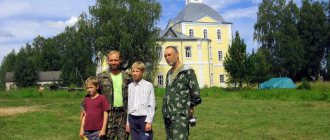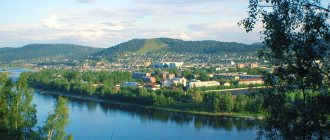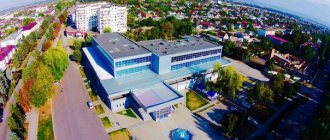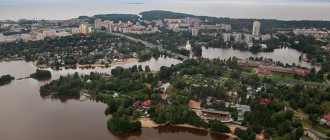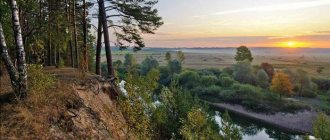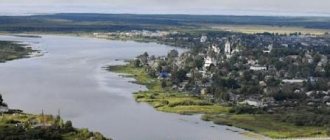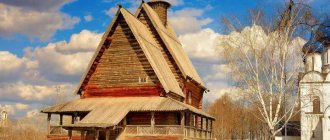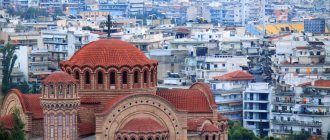Valencia is a charming city with a huge number of attractions. The special flavor of the city, its centuries-old history in harmony with modern art attracts travelers from all over the world. Where to go and what to see, everyone will decide for themselves.
Valencia is the third most important city in Spain. It is located in the southeast of the country. More than 800 thousand people live here.
This is a port city on the Mediterranean Sea, so the climatic conditions here are like in all Mediterranean countries: summers are hot and humid, winters are mild and warm. The best time to visit is autumn and spring. So, interesting places in Valencia!
Find the Holy Grail
Where: Miguelete Cathedral with Bell Tower
Photo: Andrew H, CC BY 2.0
The Valencia Cathedral seems to be made up of unrelated parts. Previously, in its place there was a Visigothic church, which was converted into a mosque. Then the mosque was demolished and the building of the current cathedral was built for several centuries - it turned out to be an intricate mixture of different styles from Gothic to Baroque and Neoclassicism.
Without leaving the cathedral on the street, go to the chapel where the Holy Grail is kept - the cup from which Jesus Christ drank at his last meal. It is not known for sure whether the relic is genuine, but it makes a strong impression. While you catch your breath, admire the chapel's vault, shaped like an eight-pointed star.
To the left of the main entrance to the cathedral, climb the Miguelete Bell Tower along a narrow spiral staircase. Entrance costs 2 euros, sore muscles and the best view of the city are included.
Where to go instead of Prague and Paris: The most underrated cities in Europe
Find cheap flights to Valencia
Choose a hotel in Valencia
Sights of Valencia
Sights of Valencia. The most important and interesting sights of Valencia - photos and videos, descriptions and reviews, location, websites.
- Last minute tours
to Spain - May tours
around the world
- Valencia, Calle de la Lonja, 2
the very bestLonja de la Seda
Valencia, Calle de la Lonja, 2
Lonja de la Seda (Silk Exchange) is one of the most famous architectural monuments of Valencia. This attraction is a collection of buildings in which the silk trade was carried out in the Middle Ages, and is rightly considered a magnificent work of art by Spanish architects.
- Fine
Valencia, C/ Eduardo Primo Yufera, 1B
the very best
Oceanographic Center of Valencia
Fine
1 review
Valencia, C/ Eduardo Primo Yufera, 1B
You should definitely visit the Oceanographic Center of Valencia, Europe's largest, which brings together representatives of flora and fauna from all over the world. Each ecosystem is located in a separate building: sea lions rest in one, bright tropical reptiles swim in flocks in the other, and birds make noise.
- Valencia, Calle Quart, 80
Botanical Garden of Valencia
Valencia, Calle Quart, 80
In the mid-15th century, the University of Valencia opened a medical faculty - and for the needs of teachers and students, medicinal plants began to be planted on the banks of the Turia. The Botanical Garden of Valencia is a living museum, a descendant of that modest apothecary garden. - Valencia, Avenida del Professor Lopez Pinero (Historiador de la Medicina) 3-7
City of Arts and Sciences
Valencia, Avenida del Professor Lopez Pinero (Historiador de la Medicina) 3-7
For centuries, spring floods have flooded Valencia, from time to time becoming a real natural disaster. At the turn of the new millennium, the waters of the Turia River were diverted to the side, and a park was laid out in the drained bed, stretching across the entire city. - Valencia, Calle Poeta Querol, 2
Aguas Palace
Valencia, Calle Poeta Querol, 2
One of the most interesting tourist sites in Valencia is the Aguas Palace, not far from the town hall. In the 14th century it was the ancestral seat of the wealthy but not noble Rabassa family. Having become related to the Counts of Toulouse, the former merchants received baronial status and the surname Dos Aguas, that is, “Two Rivers.” - Valencia, Placa de l'Almoina
Cathedral in Valencia
Valencia, Placa de l'Almoina
This beautiful cathedral, consecrated in honor of the Assumption of the Virgin Mary (also known as the Cathedral of the Virgin Mary), is the main church of the Christian community of Valencia. Despite the fact that this is a working church and not a museum, many visitors are eager to explore it from the inside - Valencia, Plaza del Arzobispo, 1
Crypt of Saint Vicente Martyr
Valencia, Plaza del Arzobispo, 1
During the reconstruction of an ancient building not far from the Cathedral, the walls of a house built in the 4th century AD were found underneath it. e., when Valencia was ruled by the Visigoths. Archaeologists found that the room alternated between a prison, a crypt, a baptistery, that is, a baptismal place, and a chapel. - Valencia, C/ San Pio V, 9
Museum of Fine Arts of Valencia
Valencia, C/ San Pio V, 9
The Museum of Fine Arts, built at the beginning of the 17th century and serving as an educational institution for the clergy, provides a unique opportunity to get acquainted with the culture and history of the city, visit the halls of archaeological finds, furniture and household items from different historical eras. - fabulous
Valencia, Avenida del Profesor Lopez Pinero, 7
Prince Felipe Science Museum
great
1 reviewValencia, Avenida del Profesor Lopez Pinero, 7
No less interesting will be a visit to the Prince Felipe Science Museum. The unusual building itself, supported by five columns with a completely glazed facade, contains no less interesting exhibits, including an exhibition called “Titanic”, which tells the story of the shipwreck.
- Valencia, Calle del Poeta Querol, 2
National Ceramics Museum of Valencia
Valencia, Calle del Poeta Querol, 2
In one of the ancient palaces of the city called Palazzo del Marques de Dos Augas, the National Ceramics Museum is located, the luxurious main entrance of which is decorated with alabaster compositions with the figure of the Madonna. - Valencia, Carrer del Pintor Marti Girbes, 23
Albufera Natural Park
Valencia, Carrer del Pintor Marti Girbes, 23
Albufera Natural Park is one of the largest and most bird-rich wetland parks found on the Mediterranean islands. Its area exceeds 1645 hectares. The park area was declared protected in 1988, and today there is a part of it that is open to the public. - Valencia, plaza del Ayuntamiento, 1
Valencia Town Hall
Valencia, plaza del Ayuntamiento, 1
One of the most beautiful buildings in Valencia is its town hall, which occupies an entire block in the city's main square. Until the mid-18th century, it housed the Royal College, and the structure looked completely different, but after the city hall moved here, it underwent several reconstructions and acquired its current appearance. - Valencia, Camp de Morvedro region
Sagunto
Valencia, Camp de Morvedro region
The ancient city of Sagunto is full of attractions that have accumulated over the 23rd century: lovers of archeology and walks along the winding streets will have a great time here. His story begins with the fact that the future great commander Hannibal in 219 AD. e. wiped out the settlement of Ars, allied with Rome, from the face of the earth. - Valencia, Avinguda de Suecia, 149
Mestalla Stadium
Valencia, Avinguda de Suecia, 149
The Mestalla Stadium in Valencia, Spain, was opened in 1923 as the home stadium of the Valencia football team. Before this, the local team rented a football field in Alhiros, until one day one of the ardent fans did not regret the money he had saved for his own wedding. - Valencia, Plaza de la Reina
Torre del Miguelete
Valencia, Plaza de la Reina
To the left of the entrance to the Cathedral in Valencia there is an octagonal Gothic bell tower, which began to be erected in 1381 according to the design of Andrea Julia. Half a century later, construction was stopped and only 400 years later the main bell was finally raised and consecrated.
Valencia is the oldest city in Spain, founded by the Romans in 138 BC. e., has recently become the main tourist center of Spain. The temperate Mediterranean climate, soft sandy beaches, warm sea - all this attracts hundreds of tourists who want not only to soak up the sea, but also to see with their own eyes unique monuments of architecture and art.
City architecture
The oldest building in the city is the Crypt of Saint Vicente the Martyr. This small chapel in the Visigothic style was used as a prison and now houses the ashes of the Saint. Tourists are offered to watch a documentary film that tells about the history of the city, the life of Saint Vicente and his death.
The medieval Catholic Cathedral of La Seo, designed in Baroque style, was built in the 15th century in the main square of the city. On the south side the cathedral is decorated with the Puerta del Palau gate, made in the Romanesque style, and on the north side - the Gothic gate Puerta de los Apostoles, richly decorated with a variety of sculptural compositions. The interior of the cathedral, like its external appearance, is distinguished by its richness; paintings by Palomino and canvases by Goya are collected here, and in the main chapel there are ancient frescoes by Fernando de Llanos, a student of Leonardo da Vinci.
The oldest building in the city is the Crypt of Saint Vicente the Martyr.
In the historical part of the city there is an octagonal bell tower, Torre del Miguelete, which is 68 meters high. In 1418 the bell of the same name on the tower was illuminated. Today there is an observation deck on the tower, which offers a magnificent view of the hysterical part of the city. In the northern part of the city, the Torres de Serrano Gate was built in 1398. Two symmetrical towers, connected to each other, once served a defensive function; in 1930 they were restored and now represent a unique architectural monument with an excellent view. In addition, in the ancient tower there is a Maritime Museum, which displays an unusual collection made by underwater archaeologists.
Hang out on the beach
Where: the beaches of Las Arenas and Malvarosa in Valencia, La Pineda and El Saller in the towns closest to Valencia
El Saler beach near Valencia
A trip to Valencia is ideally combined with a holiday at sea. There are kilometers of beaches, oh, and 300 days of sunshine a year.
You can swim comfortably in Valencia from mid-June to the end of September.
To the north of the seaport of Valencia, the city beaches of Las Arenas and Malvarosa stretch without interruption - wide, clean, well equipped. The smooth entry into the sea is suitable for children, and adults will appreciate beach volleyball, which in Spain attracts almost everyone. Malvarosa continues with Patacona Beach - it is further from the city, but calm and uncrowded.
To the south of the port are the beaches of neighboring towns, which can be reached by car in 10–20 minutes. The closest beach to Valencia, La Pineda, begins behind the current canal of the Turia River. It is adjacent to El Saler Beach with beautiful sand dunes.
Ideas for a beach holiday: Where to go to the sea without a visa
Find cheap flights to Valencia
Rent a car in Valencia
Shopping (What and where to buy)
Photo: Porcelain figurines
The most popular souvenirs from Valencia:
- Of course, jamon comes first. There are several types of jamon on sale, but the main ones are jamon serrano and jamon ibérico. The first one is simpler and is prepared from ordinary domestic pigs. The second is more expensive, as it is prepared from an Iberian pig that eats acorns.
- Porcelain figurines from the local Lladro factory. The most popular figure is a bull - a symbol of Spain.
- Ceramic products (magnets, plates, vases) are in great abundance.
- Those with a sweet tooth will love turron, an Arabic dessert made from nougat, roasted almonds, candied fruit and honey, which has taken root in Spain.
- Spanish wine, especially Moscatel and Alicantine Fondillon.
Where is the best place to go shopping? Top 5 best places for shopping in Valencia
- The Central Market will captivate you with its aromas and range of fresh products. If you buy jamon or sweets, then you need to do it here.
- On Sunday, be sure to go to the flea market at Plaza Luis Casanova ( ). There are wonderful and original souvenirs here.
- Multi-storey shopping center Nuevo centro (Avenida Pio XII), where inexpensive clothes, shoes and various accessories are sold.
- Chic Bonaire mall on the outskirts, where outlets of famous brands are presented.
- The Barrio del Carmen shopping district, as well as Calle Poeta Querol and Calle Paz streets with expensive clothing and shoe boutiques.
There are two main sales periods in Valencia: a short one from the end of January to the beginning of February, and a second one that lasts the whole of August. Discounts are up to 80%, and stores are open late at this time.
Prices
In Spain, prices are quoted in euros. The euro to ruble exchange rate is 1 to 64. According to tourists, one of the most profitable currency exchange offices is located near Plaza del Ayuntamiento, where they offer a good exchange rate and there are no additional commissions.
You can have an inexpensive lunch in Valencia for about 10 euros per person. Dinner for two with local alcohol will cost 35 euros. Fast food lovers can eat for 7 euros.
Coffee lovers will pay 1.5 euros for a cup of coffee.
Food prices:
- Jamon 1 kg – from 15 to 72 euros depending on quality
- Milk – 1 euro
- Bread – 0.8 euros
- Tomatoes – 1.85 euros
A ticket to the museum costs from 3 euros, but for art fans a 72-hour pass is sold, which is valid in many museums. Costs 6 euros. Most museums have free admission on Saturdays or Sundays. If you look in advance, you can manage to visit almost all the museums for free.
A room in an inexpensive hotel costs 35 euros per day per person. Hostels and 2-star hotels are ready to accept for 22-25 euros.
A short taxi ride will cost 10 euros.
Metro or tram ticket – from 1.5 euros.
Average budget per person (including food, accommodation and museum visits): 40-70 euros.
Take a walk along the river that doesn't exist
Where: Turia Park
The Turia River used to flow through the center of Valencia - a stroke of luck by the standards of arid Spain. But the wayward flow often overflowed its banks, and after another catastrophic flood in 1957, they decided to pacify Turia. The river was moved four kilometers to the side, and a recreation area was built in the old bed, adjacent to which is a biopark and the City of Arts and Sciences.
In the evenings, locals gather in Turia's manicured gardens to socialize, run, do yoga, ride bikes, walk with their children, or grab a bite to eat at the outdoor café. No one feels cramped.
Lavender, roses and wild rosemary: The best flower routes in the world
Find cheap flights to Valencia
Rent a car in Valencia
Holidays in Valencia with children
Tourists who come on holiday with children will also have something to do in Valencia. Museums are a little boring for kids, but there are places that neither the child nor the parents will want to leave.
Here are 5 win-win options:
Oceanographic. This amazing object is also a museum, but a very unusual one. The Oceanographic Park of Valencia is considered the largest in Europe. One part is underground, the other is in the open air. Here you can not only look at exotic fish, but also take a walk among butterflies and birds of paradise.
There is a dolphin show in the park twice a day.
A ticket for an adult costs 31.3 euros, for a child – 22.9 euros.
There is also a restaurant surrounded by aquariums, but reservations must be made in advance.
Discount tickets HERE ⇒
Zoo or Biopark of Valencia. Here you will have a feeling of complete immersion in nature. This is facilitated by the original design and the absence of cages that are harmful to wild animals. Instead, rocks, rivers and ponds are used, and even exotic African animals feel at home.
In addition, the unusual Valencia Biopark hosts shows with animals.
Entrance for a child costs 18 euros, for an adult – 23.8 euros.
Discount tickets HERE ⇒
Lake Albufera. Here you can ride a boat and see rare birds listed in the Red Book.
The best way to satisfy your hunger after a walk is to buy delicious paella in the town of El Palmar, located right on the lake.
Gulliver Park - a huge sculpture of this hero - is a playground for children.
Both adults and children will enjoy a trip to the Planetarium, and at the city port, board a tourist train for a short trip around its territory.
So Valencia with children is always fun and educational.
Gulliver Park.
Visit a medieval stock exchange
Where: Lonja de la Seda Silk Exchange
In antiquity, silk could only be made in China. The Celestial Empire kept the secret for a long time, but silkworm larvae and production technology still leaked into the big world. Together with the conquering Moors, the art of silk weaving came to the Iberian Peninsula, including Valencia.
By the 15th century, Valencia, already free of the Moors, had become one of the most prosperous trading cities in the Mediterranean, largely due to its silk production. The building of Lonja de la Seda (“silk exchange”) was erected for merchants - a symbol of the Golden Age of Valencia.
Now the Silk Exchange is open as a museum. There is no exhibition: the seventeen-meter ceilings, gargoyles and marble floors are amazing in themselves (UNESCO confirms). To better understand medieval architectural styles, take an audio guide in Russian.
From Lhasa to Beijing: 15 places in China that you can't forget
Find cheap flights to Valencia
Choose a hotel in Valencia
Reviews from tourists
- Anton, Krasnoyarsk
I highly recommend a trip to Valencia. A chic and colorful city. A huge number of all kinds of museums and palaces. A wonderful aquarium and biopark, which the children were delighted with. Many tourist sites are nearby, within walking distance.
- Irina, Nizhny Novgorod
The first time was in Spain, in Valencia. And she simply captivated me. I liked the amazing beaches and the famous paella. There is where to have fun in the evening, many discos and all kinds of bars. We watched a performance with an incendiary dance - flamenco. Beautiful people dance beautifully.
- Alexander, Barnaul
Since I am an engineer by profession, I really liked the Prince Felipe Museum, very informative. In general, Valencia is a unique city. Everything is here for a great time. I ordered a guide in Russian, with whom we traveled around the area, stopping at a farm where they make cheese. I highly recommend it!
- Anna and Maxim Orlov, Kostroma
Our parents bought us a honeymoon ticket to Valencia. That's great! Where have we not been, what have we not seen? The impression remained indelible. We will never forget the time spent in this beautiful city. Museums, palaces, parks, beaches, amazing cuisine. And you can walk around the central market for hours and not get tired of it. I really want to come back here!
- Andrey, Vladimir
My wife and I traveled independently.
We saw the city, toured the entire region. There are so many interesting things around. You can’t take your eyes off the landscapes. We took a map in Russian with us, which was very helpful. Valencia is very popular among tourists, and this is just a small list of interesting places. The hot Spanish city will give everyone an unforgettable vacation!
Teleport to the future
Where: City of Arts and Sciences
In Valencia, founded by the Romans, there is an absolutely futuristic object - the City of Arts and Sciences. When it was built, there were many dissatisfied: it contrasts too much with the Old Town. Now this place from the future only evokes admiring sighs and the desire to take a ton of selfies.
The City of Arts and Sciences is located in the old bed of the Turia River and consists of seven starship parts: an opera house, an IMAX cinema and planetarium, a garden under a transparent gallery, a science museum, an aquarium, a single-pylon cable-stayed bridge and a competition complex. There are mixed reviews about the science museum: the exhibits can and should be touched, but the annotations are written in Spanish. But everyone likes the aquarium with huge underwater tunnels.
Time travel: 15 places on earth where the future has already arrived
Find cheap flights to Valencia
Choose a hotel in Valencia
Zoo (Bioparc Zoo)
Created in 2008, the zoo is owned by the city but operated by a commercial zoological company. It is located along the Turia Gardens and has a modern concept of designating habitats for animals that are visited by people and not the other way around.
Instead of separating animals from people with railings and cages, they use natural terrain such as large rocks, ditches and rivers to keep them apart. African animals are the highlight of the zoo, although there are other examples from other world ecosystems.
| Address: | Ticket prices: |
| Avenida Pío Baroja, 3. Website: bioparcvalencia.es Bus: 3, 29, 67, 81, 95. Nearest metro station: Nou d'October (lines 3, 5) | Adults (13-64): 23.80 euros. Children (4-12): 18 euros. Seniors (65+): 17.50 euros. Children under 4 years old are free. |
Hotels in the area from Booking.com.
Listen to the carillon
Where: Valencia Town Hall
You won't confuse Plaza Ayuntamiento with anything else: the Valencian City Hall is one of the most prominent buildings in the city. Previously, there was a college on this site, then it moved, and the city council was housed in the building. To give the new town hall a solid appearance, an elegantly decorated façade was added to it.
The central tower of the town hall was decorated with a clock and a carillon - a musical instrument in which more than twenty bells are controlled from a keyboard. Take this opportunity: the carillon is a rare thing, and in Valencia it plays every hour.
By the way, the expression “raspberry ringing” has nothing to do with raspberries: it is associated with the carillon in Mechelen, Belgium.
From 8:30 to 14:00 from Monday to Friday, don't miss the chance to go inside the Valencian City Hall. Climb the marble staircase, look at the stained glass windows, bas-reliefs and huge crystal chandeliers and be sure to go out onto the balcony from which the mayor addresses the city residents.
To Europe for the weekend: 12 fun routes
Find cheap flights to Valencia
Rent a car in Valencia
When is the best time to go to Valencia?
Valencia has a Mediterranean climate with hot, dry summers and mild, wet winters, which by our standards are more like spring.
To explore the sights, it is best to come to Valencia in March–May and September–October: you will avoid the heat, crowds of tourists and high housing prices.
The swimming season in Valencia begins in June and lasts until the end of September. In May the sea is still a little cold, although there are many who like to cool off.
In winter in Valencia there are strong chilly winds from the sea: look for accommodation with air conditioning for heating, and take a jacket and hat with you.
Church of St Thomas and St Philip
The building, with its dazzling blue-tiled dome, exemplifies the typical Mediterranean style of Valencia. Iglesia de Santo Tomás y San Felipe Neri was built in 1725. In 1982 it was given the status of a National Historic Monument. It is worth paying attention to the original, intricately designed, baroque façade and architectural layout. By the way, the layout was almost 100% copied from the Church of Il Gesu in Rome.
The spectacular interior features a spacious central nave lined with numerous chapels. Catholic mass is celebrated in the church daily. The attraction is closed to the public, but tourists can attend mass to see the beautiful sanctuary.
Address: Plaza de San Vicente Ferrer.
Take part in a water court
Where and when: Thursdays at 12:00 at the Cathedral
In order for grapes, beans, oranges and olive trees to grow better, irrigation canals were laid in Valencia back in the Middle Ages, which are still in use today. Since then, the Water Tribunal has been preserved - a court that resolves controversial issues on canals and water distribution.
Every Thursday at noon, representatives of all nine irrigation canals sit in a circle on chairs near the Cathedral. Farmers state their cases: someone wants to dig a temporary canal to irrigate a distant field, another is dissatisfied that a neighbor is not cleaning his plot well and the water is flowing slowly - the tribunal considers all cases and makes decisions. Spectators with smartphones crowd around, but the judges are not bothered by such trifles.
The law is not written: Unusual traditions and superstitions from around the world
Find cheap flights to Valencia
Choose a hotel in Valencia
Towers of Torres de Quart
Let's start our description of the sights of Valencia with the Torres Towers. The beginning of the second half of the 15th century was marked for provincial Valencia by the completion of the construction of these famous medieval towers. Construction began in 1441 under the direction of Francesc Baldomar, Bonfill Pere and Pere Compte.
Built in Gothic style with masonry and carved stone, the towers are somewhat reminiscent of the Arc de Triomphe in Naples. It was its outline that the architects took as a basis when designing the Torres vu Quart towers.
The towers managed to survive several bloody wars, after which numerous holes remained in the fortress walls, gradually inhabited by agile birds. The buildings suffered the most damage during the French siege of 1808.
These towers attract not only the opportunity to get in touch with the past, but also the desire to admire the roofs of famous Valencian buildings. City guests rush to the observation deck of this attraction, which is open daily. Its role is played by the specially equipped roofs of two brick towers, which still amaze with their power!
| Address: | Opening hours: |
| Plaça de Santa Úrsula, close to several metro stations - Turia and Angel Guimera. | Mon.-Sat. from 9.30 to 19.00, on Sundays and holidays from 9.30 to 15.00. Ticket sales stop 20 minutes before closing. |
| Ticket prices: | Website: |
| 2 euros | musosymonumentosvalencia.com |
Slip into a house a meter wide
Where: Lope de Vega Square, building 6
In Valencia, look carefully around so as not to miss the 107 cm wide La Estrecha house. The Spaniards claim that this is the narrowest house in Europe. In fact, the record holder with a width of 92 cm is located in Warsaw. But plus or minus fifteen centimeters does not change the impression of a facade that you can wrap your arms around entirely.
Useful: How to price tickets on Skyscanner
Find cheap flights to Valencia
Rent a car in Valencia
Travel dates
To fully enjoy the beauty of Valencia and get to know it thoroughly, you need at least three full days. If you suddenly find yourself passing through Valencia for one day, you can take a walk around the old town and admire the Gothic architecture:
- You can start the day with a visit to the Central Market. Walking leisurely along it, you can buy fruits, vegetables and other products, as well as souvenirs.
- Next, you can go to the center of Valencia and see the City Hall and the Central Post Office building.
- Then walk to the Cathedral. Go inside and see the Holy Grail.
- Next go to the Serranos Towers.
- Stop by the Center for Science and Art. Take a walk through the gardens of Turia, visit the aquarium and choose museums to your liking. Here you can relax and learn a lot of new things.
- Then go to the beach, admire the sea, sunbathe or have a picnic.
It’s better to allocate at least a week for a beach holiday - during this time you will have time to regain your strength, recharge yourself with the Spanish sun and get acquainted with the history and customs of the city.
Look at the palace
Where: González Martí Ceramics Museum in the Palace of the Marquises of Dos Aguas
You can look at the luxurious Palace of the Marquises of Dos Aguas for hours.
In the 15th century it was an unremarkable house of a famous merchant family. A noble don married the daughter of a merchant, and their descendants received the double surname Rabassa de Perellos. Then the family bought the baronial title of Dos Aguas, and two centuries later received the title of marquis.
To emphasize their position, the newly minted Marquises of Dos Aguas turned the house into a palace - one of the masterpieces of the Spanish Baroque. Particularly captivating is the dramatic composition above the entrance: the mighty Atlanteans are an allegory of two local rivers, Turia and Jucar, and the Dos Aguas family.
After admiring the palace, do not forget to go inside. Hidden there is the González Martí Ceramics Museum, where elegant figurines, frescoes, ceramic tiles, a real carriage and interiors in the rooms of the Marquis await you.
Herding elephants, drawing with henna and forging: Where to learn the unusual
Find cheap flights to Valencia
Choose a hotel in Valencia
City of Science and Arts (Ciudad de las Artes y las Ciencias)
The City of Science and Arts is rightfully considered one of the main modern attractions. The fateful year 1998 for Valencia was marked by the emergence of the City of Science and Arts, built in a record two years. A unique complex of 6 buildings was built in the bed of the drained Turia River.
The most crowded area is the Oceanographic Park, where you can see a variety of strange fish, frolicking dolphins, and wary sharks. The Agora, a gigantic architectural structure, will give travelers joyful moments of watching sports competitions.
At the Palace of Arts, the public is treated to ballet, musical and opera performances. Other buildings also prepared many surprises for guests of this unique city.
The design was developed by local architect Santiago Calatrave. When planning a visit to this modern Valencia landmark, allow at least a few hours. It's easy to get lost among the futuristic buildings.
| Address: | Website: |
| Av. del Professor López Piñero, 7. Metro station: Maritim-Serreria. You can get from the metro by bus No. 1A. The bus runs every 15 minutes. Travel time is 20 minutes. | www.cac.es |
For lovers of walking, the distance from the metro to the cultural attraction is approximately 2 km.
Enjoy Horchata
Where: Orchateria Santa Catalina (Plaza Catalina, 6)
Paella in Valencian style - of course. Where else can you try a hearty rice dish with rabbit, chicken, beans and snails if not in its homeland? But in Valencia there is another delicacy that is less conspicuous.
Horchata is a Valencian drink made from ground chufa nodules mixed with water and sugar. Tastes similar to nut milk. The best place to order horchata for the first time is in the historic Santa Catalina horchateria. To complete the experience, take a long farton bun and dip it into a glass of cold horchata.
Start the day like the locals: What they have for breakfast in different countries
Find cheap flights to Valencia
Rent a car in Valencia
Where to live
Photo: Hotel Villacarlos
For sightseeing and walking, we recommend choosing a hotel closer to the historical center.
Top 5 best in terms of price/quality ratio for a budget holiday:
- Hospederia del Pilar (Plaza Mercado 19) is a modest hotel in the heart of the city. Suitable for young people, as the bar and club street is a 7-minute walk away.
- Hotel Villacarlos (Avenida Puerto 60) is a comfortable and inexpensive hotel with delicious breakfasts.
- Sweet Hotel Continental (Calle Correos
 – cozy hotel with clean rooms. Buffet breakfast.
– cozy hotel with clean rooms. Buffet breakfast. - Hotel Kramer (Avenida Campanar 90) is a good place near Bioparc Valencia. Nearby metro station.
- Hotel Adhoc Carmen (Calle Samaniego 20) is an original and authentic hotel with two-story rooms in the heart of the city.
For a large family or group of friends, it is more profitable to book an apartment. In Valencia you can find excellent housing options from 45 euros per night for the entire apartment.
Spy on a giraffe
Where: Biopark Valencia
No dull cages, cloudy glass or electric fences - Valencia Biopark is not like an ordinary zoo. Groomed lions, hippos and giraffes stroll through landscapes similar to their natural environment. Animals are separated from visitors by ponds, stone slides and waterfalls - as if this is a nature reserve and not a park in the city. Harmless lemurs go wherever they want.
Biopark is open from 10:00 to 21:00. It is better to come in the morning or late afternoon, when the animals are most active.
From Vienna to Singapore: 10 of the most unusual zoos in the world
Find cheap flights to Valencia
Choose a hotel in Valencia
To save money in Valencia, buy the Valencia Card.
It includes free travel on public transport, including from the airport, free or discounted museums and entertainment, and discounts at restaurants and shops.
Valencia Card for 24 hours costs 15 €, for 48 hours - 20 € and for 72 hours - 25 €. If you pay online and pick up at the tourist office, it will be 10% cheaper.
How to get there and navigate around the place
Photo: Detailed map of Valencia
Direct flights from Moscow are operated by Aeroflot. The average cost of a round trip ticket is 250 euros per person - detailed information on the official Aeroflot website - www.aeroflot.ru.
Tickets with transfers cost from 190 euros per person via Paris, Frankfurt or Zurich.
There are only connecting flights from St. Petersburg with an average price of about 230 euros per person.
Valencia has excellent public transport, so tourists can get from the airport to the center on their own.
During the day, a special AeroBus shuttle runs along the route - a ticket costs 2.5 euros;
At night, the regular yellow city bus No. 150 departs from the terminal - the fare costs 1.5 euros.
Both depart from the stopping place every 20 minutes.
And by metro – lines 3 and 5. The fare depends on which zone you need to go to. The metro map is here - https://www.valencia-tourist-guide.com/en/maps/valencia-metro-map.html. The metro website - https://www.metrovalencia.es/planificador.php?page=142 - has a convenient planner that calculates the most profitable and convenient route, combining metro and trams.
For long trips with a large group, it is worth renting a car at a price of 20 euros per day in high season.
Become a fire worshiper
Where and when: March 15–19 throughout Valencia
Every year from March 15 to 19, the Fallas festival, the local Maslenitsa, rages in Valencia.
Fallas comes from the Middle Ages. Every spring, Valencian carpenters burned candle stands that were no longer needed during the long daylight hours. Gradually, wooden boards began to be dressed up in clothes, and the holiday acquired a Christian meaning - it was dedicated to Joseph the Carpenter, the husband of the Virgin Mary. At different times, the figures were made of wood, wax, cardboard and papier-mâché, and the plots became more complex. Nowadays they mostly use polystyrene, which produces realistic giants from half a meter to five floors high.
During the days of the Fallas, from morning until late at night, the whole city walks in the streets, orchestras play, firecrackers explode and the smell of gunpowder does not disappear. Girls dressed in lush national dresses offer millions of flowers to the Holy Virgin, protector of the outcasts and patroness of Valencia. Huge dolls stand everywhere - exactly until the moment the lights come on and all the masterpieces burn in one night, except for one chosen by the audience.
Bullfighting and tomato fight: All holidays and festivals in Spain
Find cheap flights to Valencia
Choose a hotel in Valencia
Brief description of the city
Valencia is a Spanish city, which is the center of the autonomous community of Valencia and the province of the same name. It is located in the east of the country, at the confluence of the partially drained Turia River into the Mediterranean Sea. Valencia ranks third among Spanish cities in terms of population, behind only Madrid and Barcelona. The city's population is growing due to immigration and is about 800 thousand people. The area of Valencia is 134.65 km2. The city is predominantly Spanish-speaking, but the government promotes the Valencian language.
Valencia is the center of the autonomous community of the same name
Historical facts
Valencia was founded by the Romans in 138 BC, but various Greek and Carthaginian settlements existed here much earlier. In the 1st century BC. e. these places were captured by the Lusitanians, and the settlements were destroyed. Soon the Roman consul Decimus Junius Brutus Callaicus rebuilt the city and named it Valencia.
Valencia is translated from Latin as “strength, fortress”.
In ancient times, Valencia's greatest prosperity occurred during the reign of Emperor Augustus. The city's location on the important trade road Via Sucronense facilitated the development of commercial and cultural ties. In 413 Valencia was captured by the Visigoths. And in 714 the city was conquered by the Moors. Valencia was included in the Cordoba Caliphate. Under Islamic rule, Valencia again began active development, which stopped during the period of capture by the Visigoths.
At the beginning of the 11th century, Valencia became the capital of the Moorish kingdom, which was formed after the collapse of the caliphate. During the almost five-century rule of the Moors, Valencia became the center of Mediterranean trade; many buildings and fortress walls appeared in the city, some of which have survived to this day.
The Arab baths in Valencia are made in a style typical of Islamic states and are a genuine historical monument from the reign of the Moors
In 1094, the Spanish commander Rodrigo Diaz de Vivar (Cid Campeador) liberated Valencia from the Moors and ruled it until 1099. During this time, the city transformed from a Muslim stronghold into a burgeoning Christian center of Spain. After Sid's death, the reins of power were taken over by his wife Jimena, who, due to a lack of defensive forces, was forced to surrender the city to the Moors during the next siege. During the retreat, Christians burned Valencia. Since 1102, Islamic rule began again in the city. King Jaime I of Aragon finally pushed back the Moors only in 1238.
In 1377, King Pedro the Ceremonial proclaimed Valencia a “twice betrayed city”, and therefore two letters L (Spanish leal - “loyal”) appeared on its coat of arms.
In the 15th-16th centuries, Valencia became one of the largest economic centers in the Mediterranean: silk, textiles and ceramics were sold in the city. But after the discovery of America, trade was reoriented to the Atlantic coast, and Madrid became the business center. In addition, the expulsion from Spain in 1609 of baptized Moors, who largely contributed to the prosperity of the entire country, was a big blow to the economy of Valencia.
During the Napoleonic Wars of 1801–1812, Valencia heroically defended its territories. This is evidenced by the Quart towers, on which there are traces of shells. But the resistance was broken, and until 1813 Valencia was under French rule. From the mid-19th century, economic ties were renewed through trade in rice and citrus fruits.
During the Civil War of 1936–1939, Valencia was the de facto capital of Spain: the Republican government was located here.
Learn everything about porcelain
Where: Lladro porcelain factory, Ctra. de Alboraya Polígono Lladró
If the words “porcelain figurine” bring to mind unsightly pioneers and Olympic bears, go to the Lladro factory in the suburbs of Valencia. The products of the famous porcelain factory are in the Hermitage - and when you see this quintessence of tenderness and grace, you will understand: it is deserved.
In addition to the showroom, visit the production facility and see what painstaking work goes into creating one porcelain senorita. The Llardo factory offers free group tours in Russian; you just need to sign up in advance on the website.
Down with magnets! Really cool travel souvenirs
Find cheap flights to Valencia
Rent a car in Valencia
Central Beach (Playa de la Malvarrosa)
Valencia's main city beach, Malvarrosa is a wide and open beach with fine sand along the Mediterranean waters. Next to the beach is the magnificent Paseo Maritimo promenade, where guests can stroll leisurely, rollerblade, jog or go to a restaurant for a delicious paella and glass of wine.
The beach is rightfully one of the modern attractions of Valencia. It made an indelible impression on us with the width of the coastal edge and its length. The house of the famous Valencian writer Vicente Blasco-Ibáñez is located on Malvarrosa Beach and has been converted into a museum with an exhibition of his personal belongings and literary works.
City Hall Square (Plaza del Ajuntamiento)
City Hall Square is a very convenient place to start a tour of Valencia. This lively and picturesque place is loved by both tourists and locals. The fountain located in the center of the square gives coolness, and the beautiful architecture of the square's buildings pleases the eye. Here you can find a tourist center where you can find important and useful information about Valencia.
How to get to City Hall Square
Plaza del Ayuntamiento is located near the North Station (Estación del Norte) and the Central Market in the square (Plaza del Mercado). The nearest metro station is Xativa (red line 3), from here via Av. del Marqués de Sotelo and Plaça de l'Ajuntament 7 minutes walk to the square. You can also get to the square by bus: 4, 6, 16 (stop Pl. de l'Ajuntament - Ateneu).

